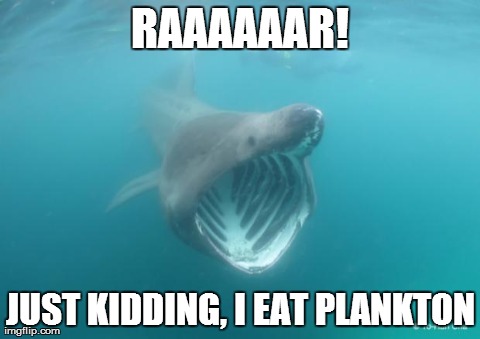
The basking shark (Cetorhinus maximus) is the second-largest living fish, after the whale shark, and one of three plankton-eating sharks besides the whale shark and megamouth shark. It is a cosmopolitan migratory species, found in all the world’s temperate oceans. It is a slow-moving filter feeder and has anatomical adaptations for filter feeding, such as a greatly enlarged mouth and highly developed gill rakers. It’s snout is conical and the gill slits extend around the top and bottom of its head. The gill rakers, dark and bristle-like, are used to catch plankton as water filters through the mouth and over the gills. The basking shark is usually greyish-brown, with mottled skin. The caudal (tail) fin has a strong lateral keel and a crescent shape. The teeth of the basking shark are very small and numerous, and often number one hundred per row. The teeth have a single conical cusp, are curved backwards, and are the same on both the upper and lower jaws. Adults typically reach 6-8 m (20-26 ft.) in length.
Basking sharks are believed to overwinter in deep waters. They may be found in either small schools or alone. Small schools in the Bay of Fundy and the Hebrides have been seen swimming nose to tail in circles in what may be a form of mating behaviour. Despite their large size and threatening appearance, basking sharks are not aggressive and are harmless to humans.
It has long been a commercially important fish, as a source of food, shark fin, animal feed, and shark liver oil. Overexploitation has reduced its populations to the point where some have disappeared and others need protection.
Above from Wiki, read more here


